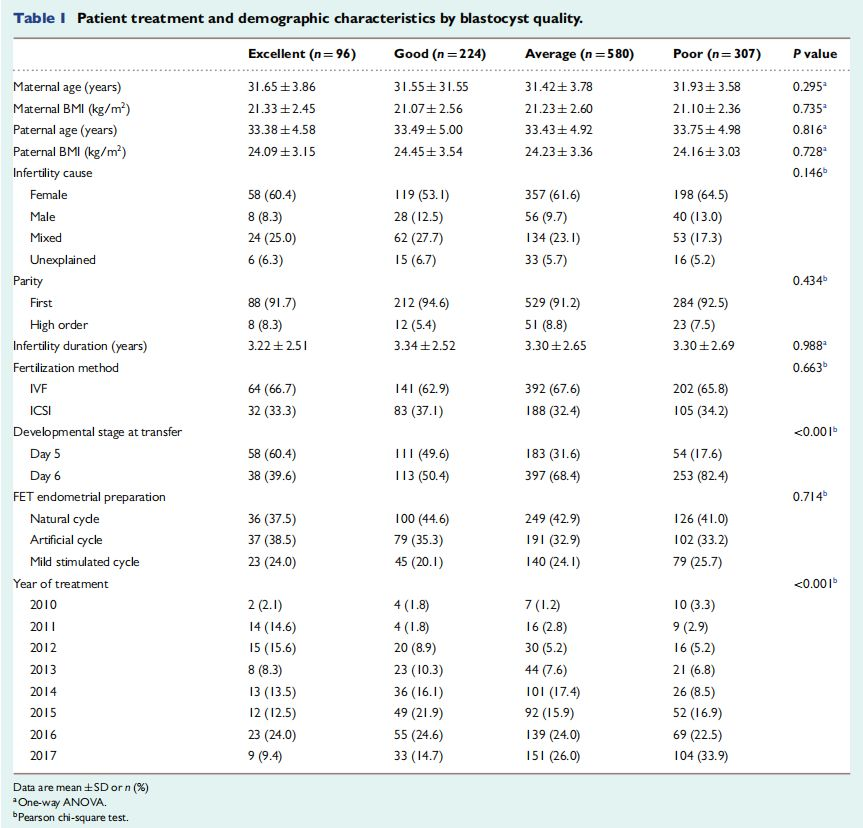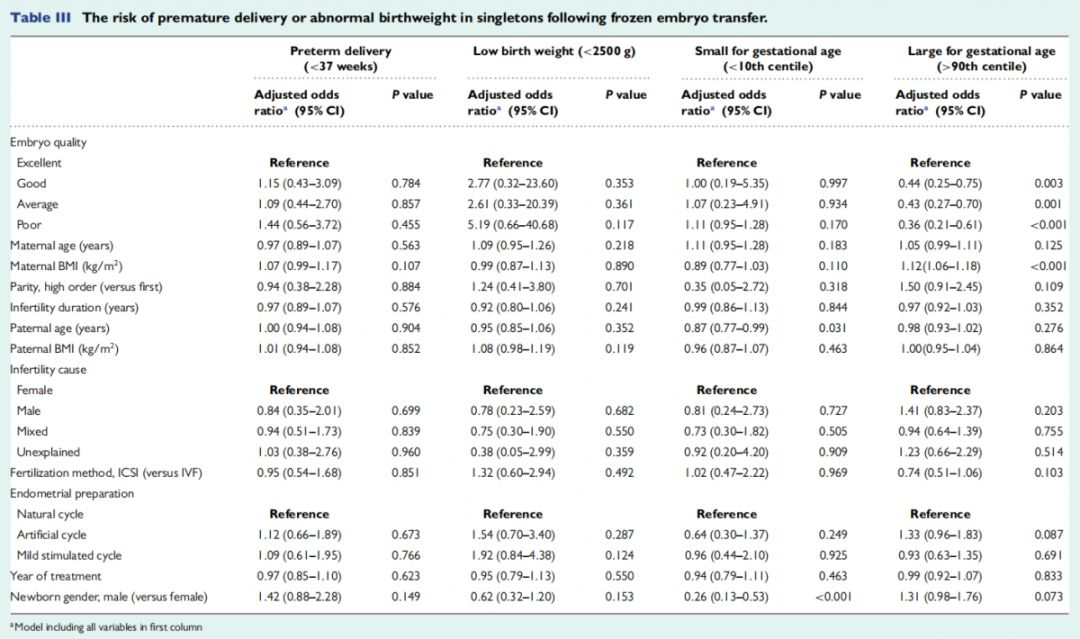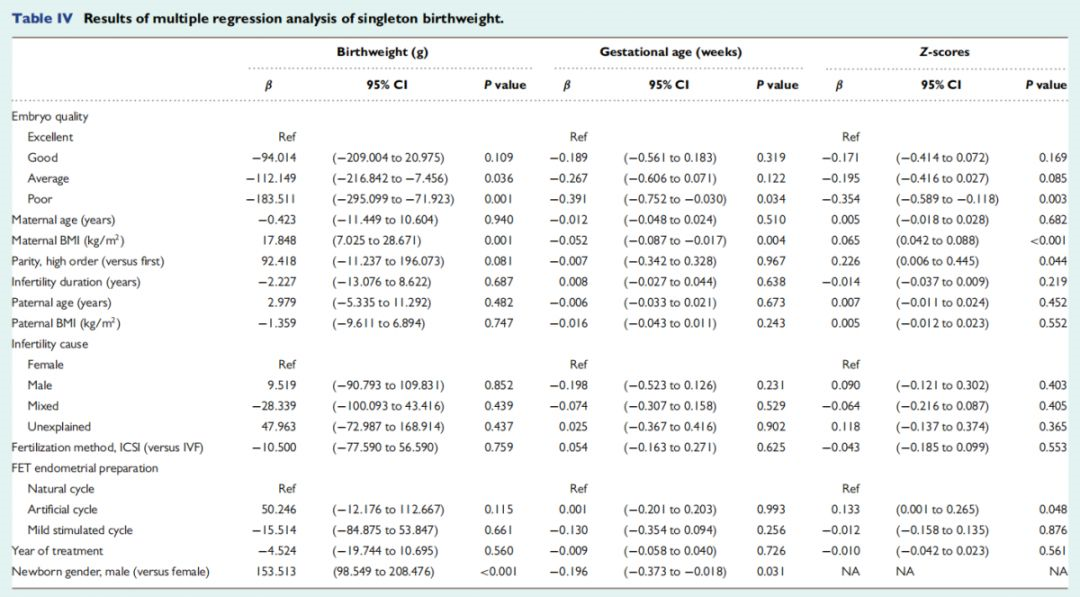The impact of embryo quality on singleton birthweight in vitrified-thawed single blastocyst transfer cycles
abstract
Research question: Will the quality of blastocysts in single embryo transfer affect the birth weight of single fetuses during the thawing transfer (FET) cycle?
Conclusion: In the FET cycle, compared to the outcome of transplanting high-quality blastocysts, the outcome of transplanting inferior blastocysts is associated with lower average birth weight and pregnancy adjusted birth weight (Z-score).
It is known that embryo quality is a powerful predictor of IVF success rate. However, few studies have examined the impact of embryo quality on single birth weight.
Study Design, Scale, and Duration: This retrospective study involved data on single live births of women undergoing thawed embryo transfer cycles in tertiary care centers from January 2010 to December 2017.

Participants/materials, environment, methods: 1207 women who met the inclusion criteria were divided into four groups based on blastocyst quality: excellent, good, medium, and poor. The main outcome measure was single birth weight. The Z-score is used to calculate birth weight adjusted for gestational age and newborn gender. After adjusting for some potential confounding factors, a multiple linear regression analysis was conducted to investigate the relationship between embryo quality and newborn birth weight.
The role of main outcomes and opportunities: In the primary multivariate model, in terms of average birth weight, the weight of single fetuses born in the low-quality blastocyst group was 183.5 g lighter than that in the high-quality blastocyst group (95% CI: -295.1 to -71.9 g, P=0.001), including consideration of patient characteristics, IVF treatment parameters, treatment year, and average birth weight of newborns of different genders. Similarly, embryos with poor transplant quality have lower Z-scores compared to those with high-quality embryos after pregnancy adjustment( β= - 0.35, 95% CI: -0.59 to -0.12, P=0.003).
Limitations and reasons for caution: The current study is limited by its retrospective design, and our analysis is limited to women who use single embryo transfer and have single births. Future prospective studies are needed to confirm our findings.
The broad implications of our research findings: Our findings suggest that transplantation of inferior blastocysts is associated with a decrease in single birth weight, providing new insights into the relationship between embryo quality and neonatal outcomes.

